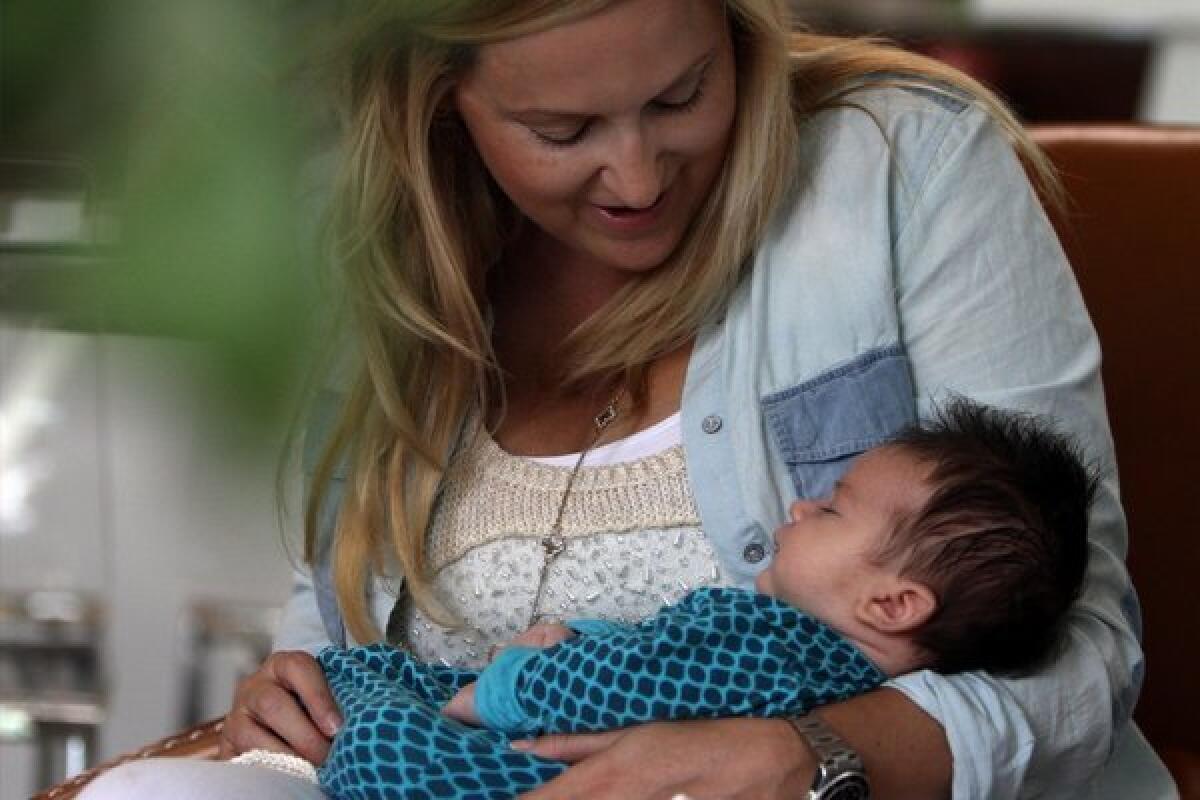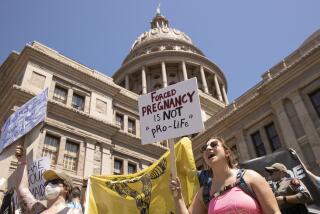Americans had fewer babies in 2012; births shifting to older mothers

The average age of women giving birth in America rose last year as the nation’s birthrate held steady following several years of decline, the Centers for Disease Control and Prevention said Friday.
The birthrate among teens and women in their early 20s hit historic lows in 2012, according to a new report from the CDC’s National Center for Health Statistics. Meanwhile, the proportion of women in their 30s and early 40s who had babies rose. The birthrate for women in their late 40s held steady.
Americans have been producing fewer babies every year since 2007, a trend that has been linked to the onset of the Great Recession. But now that decline seems to have stabilized.
With 99.96% of the country’s vital statistics now tallied, the CDC said 3,952,937 babies were born in the United States in 2012. That’s only 653 fewer newborns than in 2011, or a difference of 0.02%. The CDC says the difference isn’t statistically significant.
At 29.4 births for every 1,000 young women between the ages of 15 and 19, the teen birthrate reached an all-time low in 2012. Just five years ago, the rate was 41.5 births per 1,000 women, and in 1991 it was as high as 61.8. The birthrate for girls ages 10 to 14 was 0.4, the same as in 2011.
Women in their 20s gave birth to more babies than women in any other age group – a total of 2,040,878 babies in 2012. But the birth rate among these twentysomethings continued to fall. In fact, the 83.1 births per 1,000 women ages 20 to 24 represents a record low for the U.S.
Older mothers picked up some of the slack. The birthrate for women ages 30 to 34 rose 1% over 2011, to 97.3 babies per 1,000 women; the rate for women ages 35 to 39 rose 2%, to 48.3 births per 1,000 women; and the rate for women ages 40 to 44 rose 1%, to 10.4 births per 1,000 women.
Births among women ages 15 to 44 either declined or held steady for nearly every racial and ethnic group tracked by the CDC. The one exception was among women of Asian and Pacific Islander descent; these women had 272,949 babies, a 7% increase from 2011.
Similarly, only four states – Idaho, Kansas, North Dakota and Ohio – registered increases in their birthrates in 2012. The birthrate fell in 13 states – Alabama, Alaska, Colorado, Connecticut, Florida, Georgia, Illinois, Massachusetts, Mississippi, Nevada, New Hampshire, New Jersey and North Carolina – and held steady in the remaining 33 states and the District of Columbia. New Hampshire had the lowest birth rate (50.2 babies per 1,000 women) and Utah had the most (83.1 babies per 1,000 women).
For the fourth year in a row, the birthrate fell for unmarried women, coming in at 45.3 births per 1,000 women between the ages of 15 and 44. However, the total number of babies born to single women rose slightly, to 1,609,912.
The percentage of babies born at least three weeks early fell for the sixth straight year, to 11.54%.
The report also noted that American women as a whole aren’t having enough babies to replace the current population (although the total population still rises as a result of immigration). To keep the population steady through births alone, there would need to be 2,100 births for every 1,000 American women over their lifetimes. But in 2012, the total fertility rate was only 1,880.5 births per 1,000 women.
ALSO:
Sequencing baby’s genome: a help in treatment or too much information?
Baby boys in Western states less likely to be circumcised in hospital
Even babies prefer the underdog, psychologists say
Return to Science Now.







